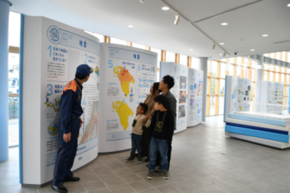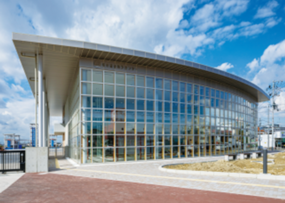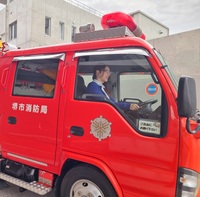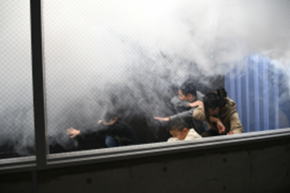Sakai City General Disaster Prevention Center
Update:2024/11/29
Address: 129-4 Ami, Mihara-ku
Hours: 9:00-17:15
Closed: Monday (open if public holiday and closed the next day), every 3rd Tuesday and December 29th ~January 3rd and special holidays.
Admission: Free
Access: Nankai bus from Nankai Koya Line Hatsushiba Station to Funatoshita bus stop (50m from center), or Kintetsu bus from Kintetsu Kawachimatsubara station to Hiraomichi bus stop (160m from center).
Book a course:
● From this link (Japanese only, need to register to apply).
● By phone (Japanese 072-363-2225 complete the application form on the same day of entrance, if its 10 people or more please submit the form 14 days before visiting by fax or email).
● If there are spaces you may be able to visit on the day.
TEL:072-363-2225
FAX:072-363-2228
MAIL:shobouse@city.sakai.lg.jp


Japan is an earthquake prone country which experiences over 150 earthquakes a year at shindo 4 or higher (Japan’s seismic activity scale; shindo 4 is significant tremor with minor damage). It is predicted that there is a 70-80% likelihood of a large earthquake occurring within the next 30 years, due to the Nankai Trough. Although the thought of earthquakes is daunting, it is comforting to know that Sakai City is well-equipped in disaster prevention, education, and frequently gets the locals involved in training sessions.
Want an informative yet fun way to learn about natural disasters? The Sakai City General Disaster Prevention Center located in Mihara Ward offers real life scenarios to learn about how to keep yourself and your loved ones safe. Here you can even experience a simulation of a shindo 7 earthquake and see the difference between the amount of damage caused without preparation and with preparation! The video that is played at the start really expresses the importance of the community’s effort in keeping themselves safe. It is said that the crucial timeframe is 72 hours after a disaster has occurred, called the ‘limit between life or death’ or the ‘life limit’. There is an emphasis on “community effort”, where the majority of the rescues from the Great Hanshin-Awaji Earthquake were done by the locals, not rescue teams. This is why it is important for everyone to receive this education so we can fight disasters together and keep each other safe.
The 1.5-hour course that I went on was a very thorough course allowing us to experience the many disasters that can happen, within the safety of the center. It feels comforting to know that with the knowledge I learned at the center, I know I can help save someone’s life, I can organize my living space that will cause the least damage during an earthquake, I can escape a fire in the safest way possible and I know what materials I need, to give myself the best chance of survival. This course includes a theatre show, earthquake room, smoke and blackout room, fire extinguishing, first-aid and disaster prevention quiz.
The center also has a large warehouse that stocks enough food for 140,000 evacuees, blankets, diapers and other necessities. There is also a massive gasoline tank hidden underneath the grounds that contains 15,000 liters of fuel and a standby generator to ensure emergency services can keep moving when usual lifelines are cut.
There is also the opportunity to get into the ambulance or firetruck and take photos. There are always events planned at the center so be sure to keep an eye out!


